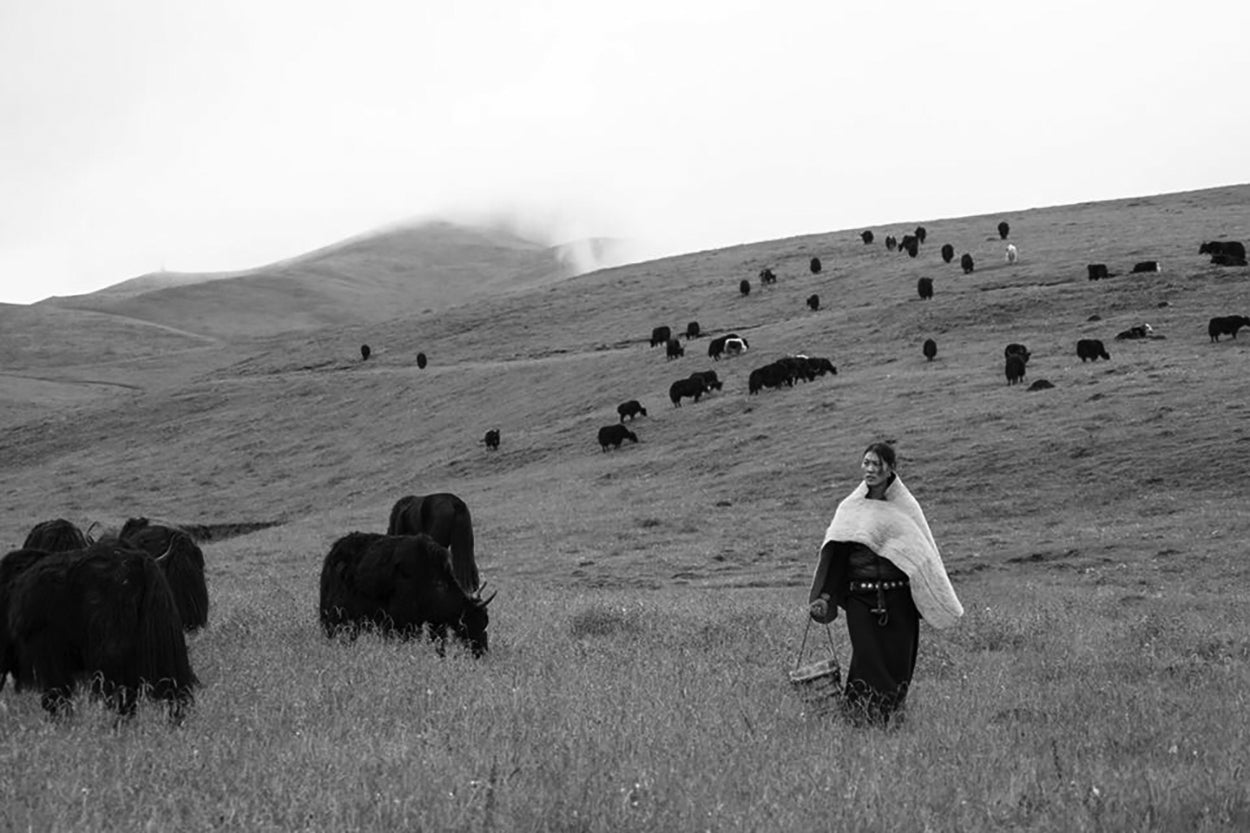FELT IN TIBET
 Asian nomads have used felt for thousands of years, and examples of felt banners were found in the Dun Hunag caves, believed to be a thousand years old.
Asian nomads have used felt for thousands of years, and examples of felt banners were found in the Dun Hunag caves, believed to be a thousand years old. Tibetan nomads mostly lived isolated from farming communities, gathering their needs from what was available in their immediate environment. This included sheep wool, which they had vast quantities of, and which they felted or wove from a primitive backstrap loom, mainly for blankets they dried their cheese on. The felting method was simple, a process that involved water, soap or a similar binding agent and vigorous rolling. The result was a thick, dense and heavy fabric that was naturally water repellent. This was primarily used for mats, which were stacked upon a sleeping platform over a layer of sheep droppings, providing an isolating layer from the damp ground of the tent.
Tibetan nomads mostly lived isolated from farming communities, gathering their needs from what was available in their immediate environment. This included sheep wool, which they had vast quantities of, and which they felted or wove from a primitive backstrap loom, mainly for blankets they dried their cheese on. The felting method was simple, a process that involved water, soap or a similar binding agent and vigorous rolling. The result was a thick, dense and heavy fabric that was naturally water repellent. This was primarily used for mats, which were stacked upon a sleeping platform over a layer of sheep droppings, providing an isolating layer from the damp ground of the tent. Felted wool was also used to make raincoats, or rather rain capes that were worn by shepherds to protect them from summer rains. Other uses were for boots and some hats, usually pointy in shape.
Felted wool was also used to make raincoats, or rather rain capes that were worn by shepherds to protect them from summer rains. Other uses were for boots and some hats, usually pointy in shape. As Norlha sought to make products from locally existing materials and skills, felting was a natural choice, as many of the Atelier’s employees had felted at some point in their lives. Since Norlha’s focus was on yak wool, artisans at the Atelier decided to try it although, considered a short fiber, it was not usually used for felting. Combining modern technology and traditional felting methods, Norlha was able to produce an even, fine and very soft textile that could be used for a wide range of products.
As Norlha sought to make products from locally existing materials and skills, felting was a natural choice, as many of the Atelier’s employees had felted at some point in their lives. Since Norlha’s focus was on yak wool, artisans at the Atelier decided to try it although, considered a short fiber, it was not usually used for felting. Combining modern technology and traditional felting methods, Norlha was able to produce an even, fine and very soft textile that could be used for a wide range of products.
